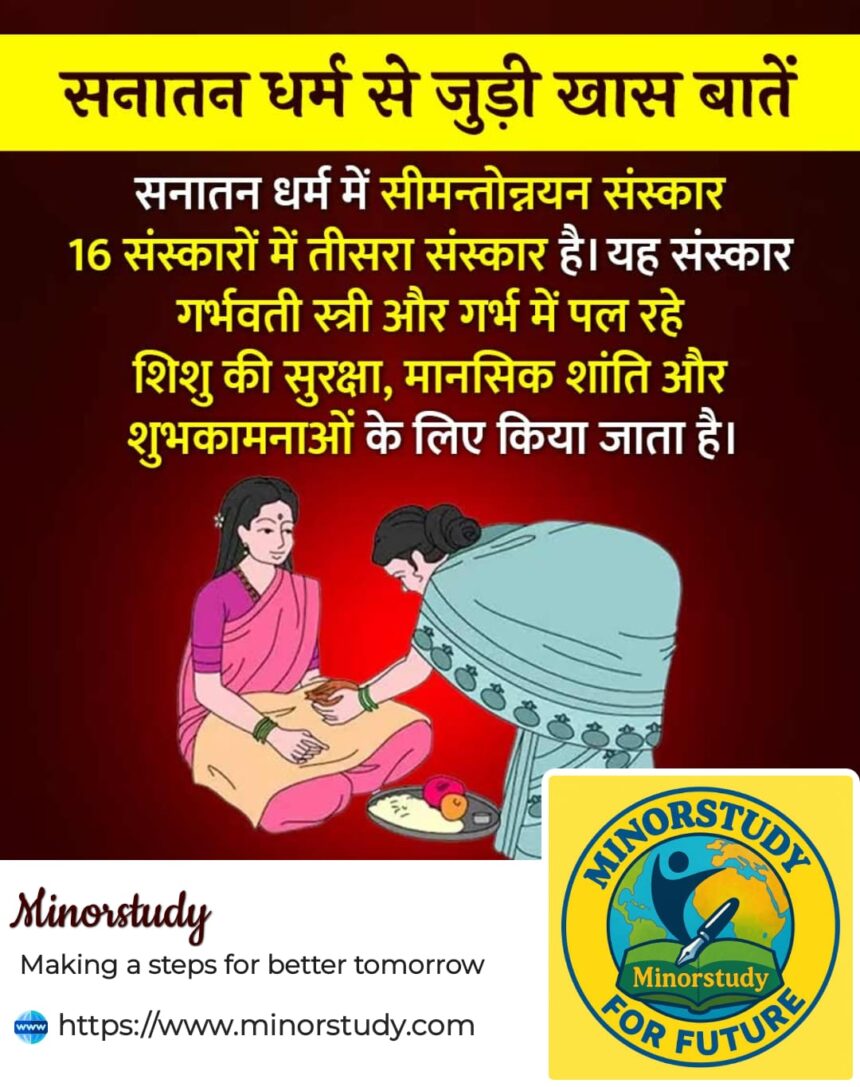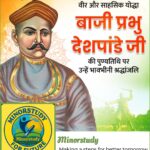🌼 7 Sacred Facts About Simantonnayan Sanskar – A Powerful Rite of Love in Sanatan Dharma
Simantonnayan Sanskar: Sanatan Dharma, the eternal way of life, is rooted in deep spiritual wisdom and values that embrace every stage of human existence—from birth to death. Among its most divine traditions are the 16 sanskars (rites of passage), each performed to purify and guide the soul. One such sacred ceremony is the Simantonnayan Sanskar, an often-overlooked yet deeply important ritual for pregnant women and their unborn children.
- 📜 What is Simantonnayan Sanskar?
- 🕉️ Timeline & When It Is Performed
- 🪔 Historical Roots of Simantonnayan
- 💡 Purpose & Significance
- 🌸 Rituals Involved in Simantonnayan
- 1. Preparation & Decoration
- 2. Invocation of Deities
- 3. Hair Parting Ceremony (Simantonnayan)
- 4. Gift Giving (Vayan or Godh Bharai)
- 5. Feast & Blessings
- 🙏 Mantras & Chants
- 🤔 FAQs About Simantonnayan Sanskar
- Q1: Is Simantonnayan the same as baby shower?
- Q2: Can it be done in modern times?
- Q3: Who performs the hair parting?
- Q4: What happens if it’s skipped?
- ✨ Observance in Society Today
- 🎁 Emotional & Societal Significance
- 🌿 Simantonnayan in Daily Life Impact
- 💬 Blessings & Wishing
- 📌 Important Points to Remember
- 🧘♀️ Conclusion – The Divine Power of Motherhood in Sanatan Dharma
This article explores the history, significance, rituals, observances, timeline, spiritual and social impact, and much more about Simantonnayan Sanskar, with a human-centric, warm tone and over 1200+ words to inspire reverence and understanding.
📜 What is Simantonnayan Sanskar?
Simantonnayan Sanskar is the third sanskar among the Shodasha Sanskars (16 sanskars) in Sanatan Dharma. It is a prenatal ceremony performed during pregnancy, especially in the second or third trimester, to bless the mother and the baby in the womb.
It is believed to bring peace, mental stability, protection, and auspiciousness to both mother and child.
It involves the parting of the pregnant woman’s hair (called “Simanta” or “Seemanth”) by her husband or elders—symbolizing divine protection and spiritual nourishment.
🕉️ Timeline & When It Is Performed
Ideal Time: In the seventh month of pregnancy, though some traditions perform it in the fourth or fifth month.
Tithi (Auspicious Date): Determined by astrologers or purohits based on the woman’s nakshatra (birth star) and family traditions.
Day Preference: Traditionally done on Monday, Thursday, or Friday, and on Shubh Muhurat (auspicious time).
🪔 Historical Roots of Simantonnayan
Simantonnayan is deeply rooted in Vedic traditions and is mentioned in ancient scriptures like Manusmriti, Grihya Sutras, and Smritis.
In Grihya Sutras, it is said this sanskar strengthens the fetus’s connection to Dharma (righteousness) and protects the mind of the mother.
In ancient times, rishis and sages ensured every stage of life had a divine touch—Simantonnayan was meant to invoke divine blessings for safe childbirth and mental calmness of the mother.
💡 Purpose & Significance
| Purpose | Spiritual & Social Meaning |
|---|---|
| Blessing the unborn child | Ensure righteous soul & mental development |
| Protecting mother from negativity | Emotional balance and positive environment |
| Strengthening family bonds | Involves prayers, gifts, and support from in-laws and parents |
| Invoking divine energies | To bless the womb, brain development, and safe delivery |
🌸 Rituals Involved in Simantonnayan
The Simantonnayan Sanskar is both ritualistic and emotional. Here’s how it’s typically conducted:
1. Preparation & Decoration
The house is decorated, especially the space where the ritual is performed.
The woman is dressed in traditional attire, floral ornaments, and is made to feel special.
2. Invocation of Deities
A homam or puja is conducted, invoking blessings from Lord Vishnu, Goddess Lakshmi, and other deities.
3. Hair Parting Ceremony (Simantonnayan)
The husband, or in some traditions, the elder women of the house, part the hair of the pregnant woman three times.
While doing so, mantras are chanted for good health, mental strength, and safe delivery.
4. Gift Giving (Vayan or Godh Bharai)
The woman is showered with clothes, sweets, bangles, fruits, and gifts.
Bangles are said to create positive vibrations for the baby.
5. Feast & Blessings
A saatvik meal is offered to all family and community members.
Elders bless the woman saying:
“Putravati bhava, sukhavati bhava” (May you have a noble child, and may you be happy).
🙏 Mantras & Chants
During the ceremony, the following types of mantras are recited:
Protection mantras (Raksha Mantras)
Blessing for the womb (Garbha Raksha Stotra)
Positive affirmation mantras for maternal health
“Om Shree Garbha Rakshambikaayai Namah”
These are believed to energize the fetus’s consciousness and ensure psychic well-being.
🤔 FAQs About Simantonnayan Sanskar
Q1: Is Simantonnayan the same as baby shower?
Answer: Culturally similar, but Simantonnayan is a spiritual sanskar, while baby showers are mostly social celebrations. However, both aim to bless the mother.
Q2: Can it be done in modern times?
Answer: Absolutely. Many families now blend traditional rituals with modern touches—performing pujas at home or temples, inviting close family, and maintaining the spirit of the ceremony.
Q3: Who performs the hair parting?
Answer: Traditionally, the husband does it. In some regions, it is done by elder women of the family.
Q4: What happens if it’s skipped?
Answer: Though not mandatory, skipping it may miss the emotional and spiritual bonding opportunity for mother, child, and family.
✨ Observance in Society Today
Simantonnayan is now observed across India and Nepal with regional variations:
| Region | Local Name | Special Features |
|---|---|---|
| North India | Godh Bharai | Sweets, bangles, singing folk songs |
| South India | Seemantham | Ritual bath, banana leaf feasts, mantras |
| Maharashtra | Dohale Jevan | Musical event, gifts from both families |
| Nepal | Simantonnayan | Family rituals and spiritual mantras |
🎁 Emotional & Societal Significance
❤️ For the Mother:
Boosts emotional strength and positivity
Reduces stress and anxiety of pregnancy
Deepens bond with family and baby
🧠 For the Baby:
Spiritual vibrations through mantras
Protective prayers for healthy growth
🏡 For Society:
Reinforces family values
Encourages emotional support for women
Builds cultural continuity
🌿 Simantonnayan in Daily Life Impact
Encourages mental health awareness for pregnant women
Fosters support systems between in-laws, parents, and spouse
Inspires spiritual bonding in times of vulnerability
Reminds society of the sacredness of motherhood
💬 Blessings & Wishing
🌼 “May every mother be adorned with peace and joy, and may every child grow with Dharma and divine protection.”
🌸 “Simantonnayan is not just a ritual—it is a promise of love, care, and hope from family to the unborn child.”
📌 Important Points to Remember
Always consult elders or pandits for correct muhurat
Choose a peaceful and loving environment
Maintain purity of mind, body, and home
Involve both maternal and paternal families for harmony
🧘♀️ Conclusion – The Divine Power of Motherhood in Sanatan Dharma
Simantonnayan Sanskar is a timeless reminder that motherhood is not just biological—it is spiritual, emotional, and cultural. In today’s fast-paced world, reviving these beautiful sanskars helps us stay grounded in love, care, and Dharma.
Whether it’s done traditionally or with a modern approach, what matters most is the intention to bless, support, and honor the divine journey of motherhood.
🕊️ Let every mother walk this sacred path with peace, strength, and divine grace.
Let every unborn child be welcomed into this world with prayers and love.








